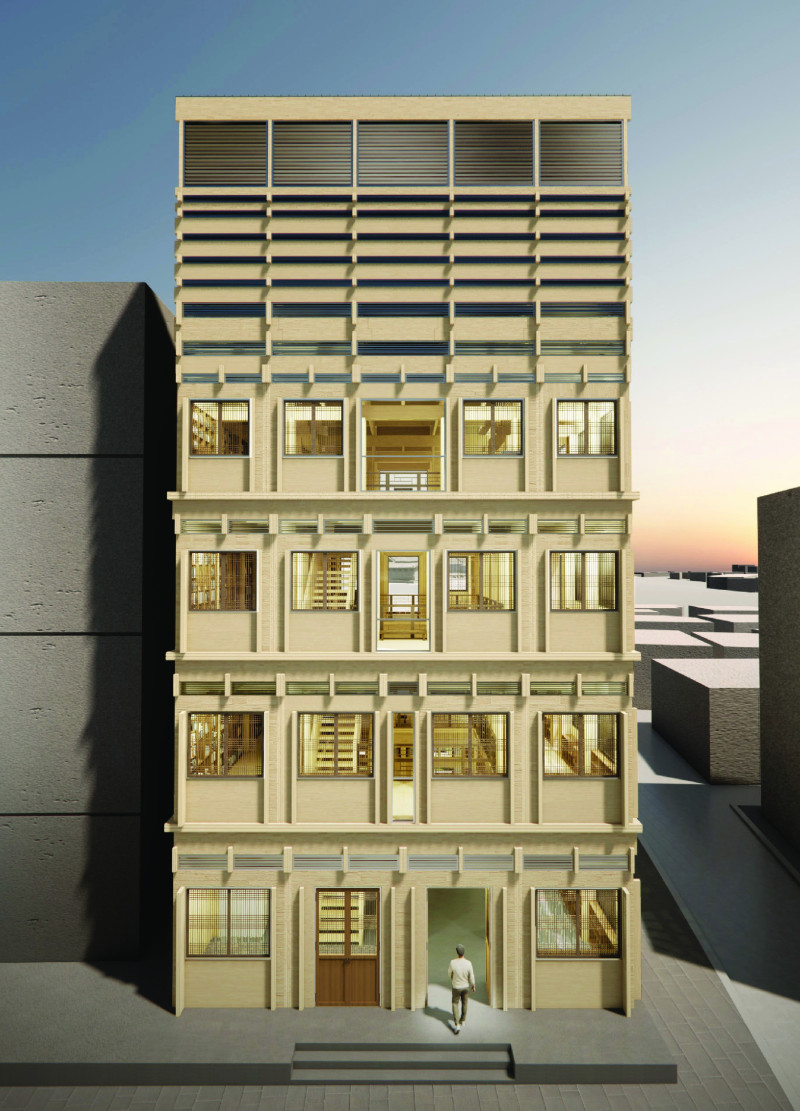5 key facts about this project
The design concept is rooted in the principles of modern architecture, featuring clean lines and a minimalist façade that prioritizes both form and function. The external appearance is characterized by a thoughtful selection of materials, including locally sourced brick, glass, and steel. The choice of brick not only connects the structure to its geographical roots but also provides a sense of warmth and familiarity in an urban landscape often dominated by cold, impersonal materials. Large glass panels punctuate the façade, allowing natural light to flood interior spaces, thereby fostering a sense of openness and connectivity with the outside world. This deliberate incorporation of transparency invites visual engagement, encouraging passersby to appreciate the activities occurring within.
The project’s layout reflects a comprehensive understanding of spatial dynamics, with carefully delineated zones that provide intuitive navigation. Entry points and circulation paths are strategically placed to create a natural flow from one area to another, facilitating movement while enhancing accessibility. The design incorporates a variety of spaces, including communal gathering areas, private meeting rooms, and flexible multipurpose zones that can adapt to various functions. This versatility ensures that the project can accommodate diverse community needs, from hosting events to serving as a hub for local initiatives.
To further support its role within the community, the project emphasizes sustainability, both in its construction and operational phases. The use of energy-efficient systems, such as solar panels and rainwater harvesting, reflects a commitment to reducing the environmental impact while also lowering operational costs. The integration of green roofs and landscaped terraces not only enhances the building’s aesthetics but also contributes to improved biodiversity within the urban environment. These architectural elements provide enjoyable outdoor spaces for users, promoting social interaction and enhancing the quality of life for residents.
The project’s unique design strategies extend to its interior spaces as well. An open-floor plan maximizes adaptability, allowing for easy reconfiguration according to different user needs. The interior finishes are thoughtfully chosen to create a cohesive design narrative that resonates with the architectural ethos. Warm wood accents contrast with cooler metal fixtures, establishing a balanced ambience that is both inviting and functional. Additionally, the incorporation of natural elements, such as indoor plants, further enhances the overall environment, promoting well-being and productivity among occupants.
The architectural proposals include detailed architectural plans and sections that illustrate the precise relationships between different spaces and their functionalities. This careful attention to detail is evident in the meticulous consideration of sightlines, acoustic performance, and thermal comfort. The incorporation of both innovative technology and traditional building techniques reflects a deep respect for architectural heritage while pushing boundaries to meet contemporary needs.
This project ultimately represents a thoughtful examination of how architecture can respond to its environmental, social, and cultural contexts. By prioritizing user experience, community engagement, and sustainability, the design encapsulates a forward-thinking approach that remains grounded in practical realities. Readers are encouraged to delve deeper into the project presentation to explore the architectural plans, sections, designs, and ideas that provide further insights into this noteworthy architectural endeavor. The intricate balance of form, function, and context underscores the importance of architecture in shaping our built environment and enhancing daily life within the community.























